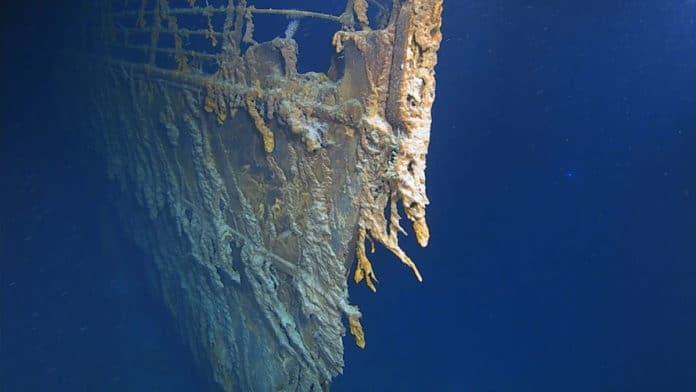For the first time in nearly 15 years, explorers dive down to the Titanic and capture images that show some of the wreck is deteriorating rapidly.
During an expedition, a manned submersible reached the bottom of the North Atlantic Ocean (3,810 meters/12,500 feet) and captured the first 4K images of the wreck earlier this month.
Some parts of the wreck were in surprisingly good condition; other features had been lost to the sea. The worst decay rot was seen on the starboard side of the officials’ quarters.
The group conveyed an advanced, two-person full ocean submergence vehicle: the cutting-edge Triton 36,000/2 named the DSV Limiting Factor. Five dives to the wreck were made over eight days at the Titanic’s final resting place 370 miles south of Newfoundland, Canada.
Under the guidance of NOAA representatives and by following U.S legal protocols, the group of specialists and scientists analyzed the remaining parts of the ship, capturing the first remarkable native 4K film utilizing specially adapted cameras to capture the wreck in a way it’s never been seen.
Using the submersible camera systems, the team performed dedicated photogrammetry passes on the wreck, allowing highly accurate and photoreal 3D models of the RMS Titanic to be produced. These assets will help assess the wreck’s current condition and project its future, as well as make it possible to visualize the wreck using augmented reality (AR) and virtual reality (VR) technology.
Lying just about 4,000 meters down in bitterly cold 1°C water, the wreck has turned out vulnerable to sweeping eddies and subjected to ever-changing sea currents. Salt erosion, metal-eating microbes, and profound current activity have the best sway on the wreck.
The group observed one area of deterioration in the officer’s quarters, where the chief had his rooms. Here the hull has begun to fall with the staterooms. While on the site, the group laid a wreath and held a short ceremony to appreciate the individuals who lost their lives in 1912.
Parks Stephenson, Titanic Historian, said, “Salt corrosion, metal-eating bacteria, and deep current action are having the greatest impact on the wreck. The most shocking area of deterioration was the starboard side of the officer’s quarters, where the captain’s quarters were. Captain’s bathtub is a favorite image among the Titanic enthusiasts, and that’s now gone. That whole deck hole on that side is collapsing, taking with it the staterooms, and the deterioration will continue advancing.”
Victor Vescovo, CEO of Caladan Oceanic and Submersible Pilot, said, “It’s a big wreck; I wasn’t quite prepared for how large it was. It was extraordinary to see it all, and the most amazing moment came when I was going along the side of the Titanic, and the bright lights of the submersible reflected off a portal and came right back, it was like the ship was winking at me. It was amazing.”
Lori Johnson, Scientist, said, “The future of the wreck is going to continue to deteriorate over time; it’s a natural process. These are natural types of bacteria, so the deterioration process ends up being quite a bit faster because a group of bacteria, a community working symbiotically to eat if you will the Iron and the sulfur.”

